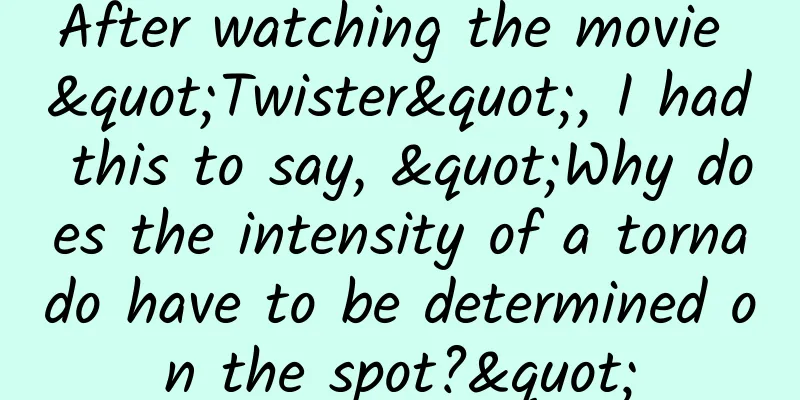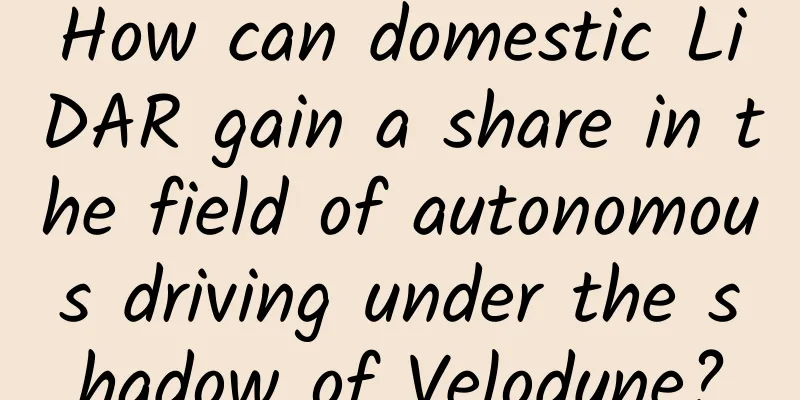After watching the movie "Twister", I had this to say, "Why does the intensity of a tornado have to be determined on the spot?"

|
I watched the newly released movie "Twister" over the weekend. The story is very compact and the pictures are very realistic. I am not a professional in commenting on the quality of the movie, but I would like to interpret two pieces of knowledge about tornadoes from the perspective of a real weather forecaster based on the scenes in the movie for the public who have watched the movie. One is that the first storm chase by the heroine in the movie failed, one of the reasons is that she did not expect the tornado to "change" from level one to level five. So what is the difference between level one and level five? In fact, like typhoons, the intensity of tornadoes is also graded, and the larger the number, the stronger the intensity. When the heroine and her companions were chasing the wind, they estimated that the level was F1, and the wind speed should be around 33-49 meters per second. The destructive power was manifested as: the roof was blown away, the mobile car house was overturned, and the moving car was blown off the road. The movie story said that the tornado reached the intensity of level F5, which means that the wind speed reached about 117-141 meters per second, and the destructive power was enough to blow up solid buildings, large cars were blown out more than 100 meters like missiles, and trees were blown away. Under such a strong situation, the plot that caused the car and the heroine's companions to be directly caught in the wind is still very real. Second, "The strength of a tornado is not determined by wind speed or air pressure, but by the damage." This is what the male protagonist said to the female protagonist (roughly speaking. I can't remember the original words). Everyone may wonder, high wind speed or low air pressure should mean strong destructive power, why not? You know, a tornado is a vortex with the strongest wind in the atmosphere, but it is very small. The measurement of its intensity remained an unresolved issue until the 1960s. Later, Tetsu Fujita, a Japanese-American meteorologist at the University of Chicago, proposed the "Fujita Scale" in 1971 with a classification idea similar to that of typhoons. That is, while dividing it according to a certain wind range, it also refers to natural destructive phenomena and divides its intensity into 7 levels (F0-F6), which has been used to this day. Considering that tornadoes are too small, the distribution of meteorological observation stations cannot be that fine, so to measure the wind and air pressure at the center of a tornado in real time is like using a big net to catch small fish. It is difficult to record the wind or air pressure at the center of a tornado through an observation station (not to mention that monitoring equipment is often damaged when a tornado strikes). Therefore, we can only go to the disaster site and infer the actual destructive power by the strength of different building structures or the degree of damage to other reference objects such as trees, and then determine the intensity level of the tornado in combination with the wind and pressure measured in the environment. Therefore, the intensity of a tornado is often not predicted, but "confirmed" afterwards. |
Recommend
WeChat red envelope cover upgrade: individuals can also customize
On November 4, the WeChat red envelope cover team...
Snapchat has laid a good foundation for the social network video dividend has emerged
Recently, it was reported that Snapchat’s daily v...
How much is the account opening fee for Baidu Ai Purchasing? How to open a store on Baidu Ai Purchasing?
How much is the account opening fee for Baidu Ai ...
Awesome brands often have their own media attributes!
I have watched quite a few product launch confere...
Ehang on the edge of the cliff: Layoffs are just a superficial phenomenon, the company is entering the countdown
Down with Sad As a winner of Toutiao's Qingyu...
How much does it cost to attract investment in Yichun Mobile Phone Accessories Mini Program?
The advantages of WeChat mini program investment ...
Self-driving cars will make this billion-dollar market extinct
According to foreign media reports, in an intervi...
Academician Cong Bin: Adhere to the truth and innovate to achieve more breakthroughs from "0 to 1"
In short, scientific and technological self-relia...
Master Xian's internal lesson on how to get rid of singleness
Introduction to the resources of Master Xian’s in...
Coughing is common in autumn and winter. Should we eat pears to relieve the symptoms? The truth is…
gossip In autumn and winter, the temperature grad...
Unboxing the new Inphic i5 quad-core phone: There is such a unique and beautiful little bun in the world
The packaging box was ordinary, but when I saw th...
How much does it cost to rent a gigabit bandwidth server?
Gigabit bandwidth refers to resources with bandwi...
Is coffee bad for your heart? Is coffee addictive? Let's learn the truth about the "life-extending magic weapon"
gossip Drinking a cup of coffee has become a ritu...
How much does it cost to create a WeChat mini program?
There is never a shortage of entrepreneurs in the...
How much does it cost to customize a film and television mini program in Xiangtan?
In order to better penetrate into various industr...









